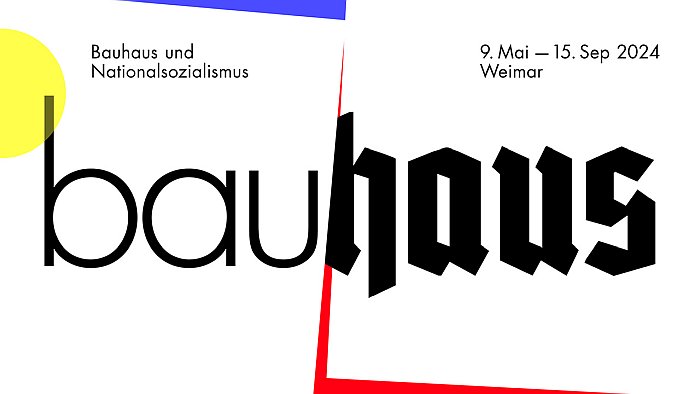As all around, certainly all around here in Europe, the world blossoms and blooms into life, as colour and variety and vitality abound, it's strange to remember that just a few short weeks ago everything was so barren, monochrome, desolate.
Not least in context of the global architecture and design museum community: how hard we had to labour to achieve anything approaching what could justifiably be termed a 'list' of new architecture and design exhibitions.
Similarly it's hard to imagine that in a few short weeks we will once again be in a position of scrubbing around looking for new exhibitions worthy of mention.
But spring and early summer are months of abundance, months where new exhibitions are waiting to be harvested, months to take advantage of while the going is good. We could have published two lists for May 2024, decided however to stay with the one; would however very much encourage you all to visit, at least, two lists worth. If not more. Get your fill while you can.
Our 6 recommendations for new exhibitions opening in May 2024, our starting points for May 2024, take us all to Berlin, Prague, Jyväskylä, Milan, Brussels and Weimar.......
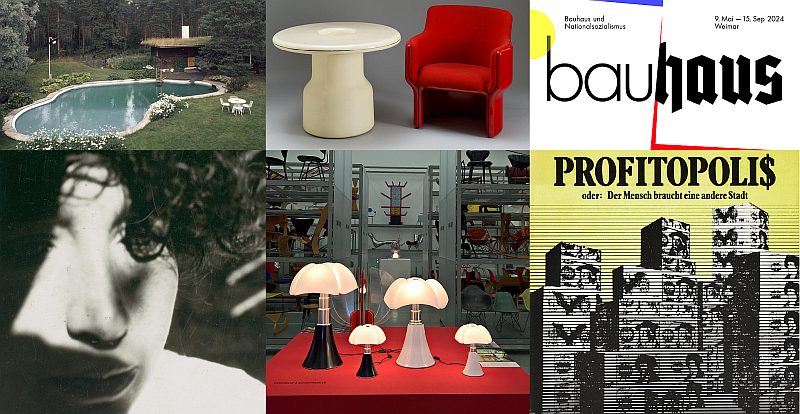
Following their enforced relocation, a relocation enforced by the purchase of the building they called home by an anonymous investor group, a building, perhaps not unrelatedely, in a gentrification ready corner of Kreuzberg, the Werkbundarchiv – Museum der Dinge, Berlin, reopen in their new home, or at least reopen their new temporary exhibition space, the new permanent exhibition is due to open in November, with an exhibition that unquestionably, and joyously so, deliciously so, is a response to that enforced relocation.
But is also, and is also importantly, an update, and a rephrasing, of the 1971 Deutsche Werkbund exhibition Profitopolis oder: Der Mensch braucht eine andere Stadt, Profitopolis or: Humanity needs another city, a 1971 exhibition of which the 2024 exhibition curators note "criticized speculation, the ruthless exploitation of nature, the orientation towards the automobile and inhumane large housing estates". Sound familiar. A familiarity echoing undiluted over some 50 years that helps underscore that the current malaises of our urban spaces aren't bad luck, aren't just one of those things; rather the problems, the consequences of our actions and our cities and our urban planning, have been known for a long time. And have been ignored for a long time.
But for how much longer can we ignore them?
Promising a presentation that seeks not only to chart routes between the 1971 and the 2024 exhibitions, and between the Werkbundarchiv – Museum der Dinge's old home and new home, but also to set those thens and nows in dialogue with one another, Profitopolis 2024 should allow for differentiated and more nuanced insights into not only where we are at in terms of our urban planning and our relationships with our urban spaces, but also insights into how we got here, and thereby help inform the urgent discussions on how we, on how our urban spaces, could, should, must move forward.
And also, hopefully, will allow insights into the role of the Deutsche Werkbund and its members in building the paths to both Profitopolis 1971 and Profitopolis 2024, insights that should help better, more probably, locate the Deutsche Werkbund in the architectural, design and social (hi)story of Germany.
Profitopolis. Or the Condition of the City is scheduled to open at the Werkbundarchiv – Museum der Dinge, Leipziger Straße 54, 10117 Berlin on Thursday May 23rd and run until Friday February 28th. Further details can be found at https://museumderdinge.org
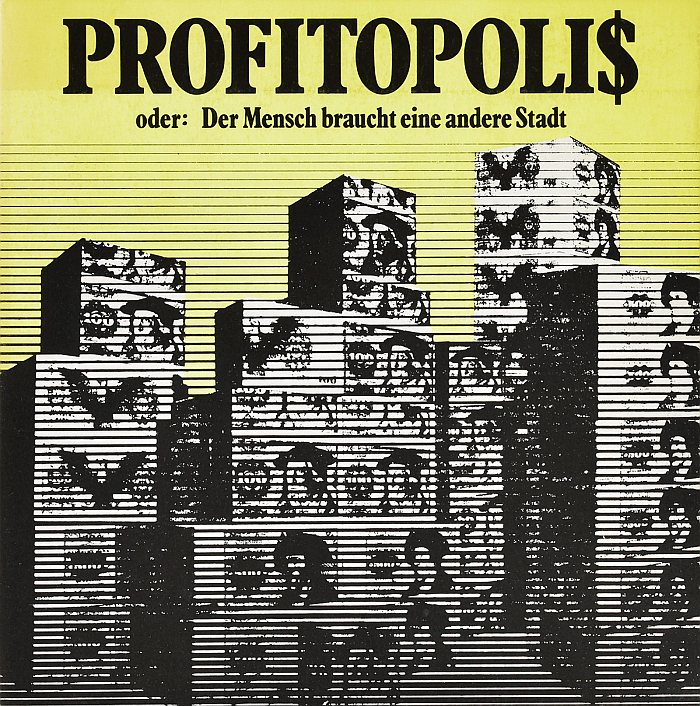
As noted from the Bröhan Museum, Berlin's, exhibition Lucia Moholy – The Image of Modernity, Moholy is not only an instructive example of how, why, so many inter-War female creatives slipped into an unjust anonymity, nor only an informative individual in context of how Bauhaus as an institution functioned on a daily basis, both during its existences and following its ultimate demise, but for all Lucia Moholy is an instructive and informative and interesting creative who should play a much more prominent role in contemporary dialogues and discourses than she currently does.
Exposures at the Kunsthalle Praha should allow Lucia Moholy to begin to do that. Promising as it does an extensive exploration of her life and work, potentially the most extensive exploration thus far, starting in the 1910s in the, then, Austro-Hungarian Empire and moving with her over Germany, England, Turkey and ultimately to 1970s and 1980s Switzerland. An exploration to be undertaken primarily through Moholy's photographs and writings that should not only help underscore what short, fleeting, episodes in her life and work the Bauhauses were, if episodes of extreme importance both in her biography then and in context of the development of her public biography, and also in context of the development of the Bauhauses, but also help better place Moholy in context of the development of photography as both an art and a science in the course of the 20th century; should allow Moholy's understandings of, and practice of, photography as art and photography as science, those two separate but related forms of photography, to enable differentiated insights into the development of photography in the 20th century.
But for all should use Lucia Moholy exposures to enable the development of a more probable image of not only Lucia Moholy but of creativity in 20th century Europe and its influence on contemporary creativity of all genres.
And, and particularly pleasing, is an extensive Lucia Moholy retrospective in her native Prague. Which is very important.
Lucia Moholy: Exposures is scheduled to open at Kunsthalle Praha, Klárov 5, 118 00, Prague 1 on Thursday May 30th and run until Monday October 28th. Further details can be found at www.kunsthallepraha.org
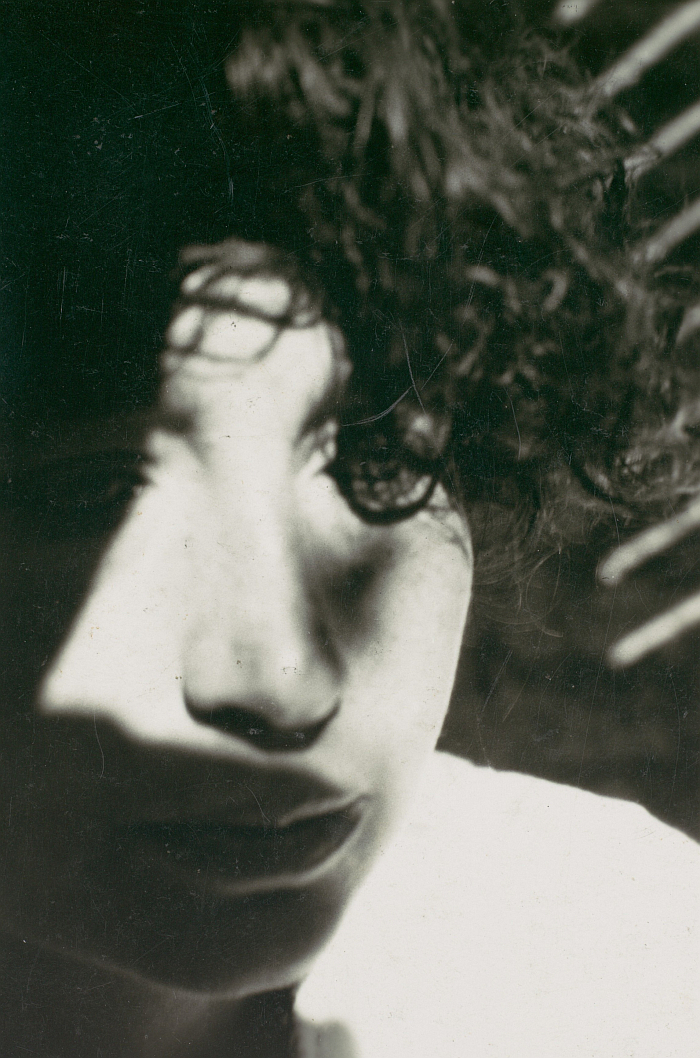
According to Aalto2 The Pool – The Origin of Pool Skateboarding combines "Alvar Aalto’s architectural heritage, international skateboarding culture, rap and hip-hop culture".
Need we add anything? Or are you busy booking flights to Helsinki?
If you're not, or if the internet has crashed 'cause everyone is trying to book flights, what we will add is that The Pool is four exhibitions in one, a quadriptych.
One, The Capital – Samples of Jyväskylä Rap, exploring the influence of rap from Central Finland on wider hip-hop culture in Finland, and three exhibitions focussed on skateboarding: Colors with its reflections on skateboarding, skate culture, from the perspective of Lizzie Armanto; Concrete Currents with its skateboarding photography by Arto Saari; and, and getting to the heart of the matter, or more accurately the kidney of the matter, From the Surf to the Sidewalk – When Skateboarding Culture and Architecture Meet with its central argument that the organic form, that characteristic free flowing outline, Alvar Aalto developed for the swimming pool of the late 1930s Villa Mairea in Noormarkku is....... the archetype of the skateboard bowl.
Which, no, had, never occurred to us before, but having followed From the Surf to the Sidewalk's curatorial argument, and having looked at a lot of photos of skate bowls, skaters in empty swimming pools, and of the Villa Mairea swimming pool, is an position it is very hard to disagree with.
And one you don't want to disagree with; for while it's very difficult to imagine Alvar Aalto skateboarding, although it is entertaining to do so, or indeed difficult to imagine Alvar Aalto approving of skateboarding, Alvar Aalto as the designer of a central element of skateboard practice and culture, skate kids misappropriating the flowing free-form organic curves of an Aalto design, is a very satisfying entry point to wider considerations on the links between architecture and skateboarding; underscores that skateboarding, skate culture, is very closely associated with architecture, arguably more so than any other form of cultural expression. Skaters have long used architecture as an environment, have long explored architecture as an environment, have developed relationships with architecture and urban spaces as environments far removed from those of non-skaters; approach architecture not as form follows function but as function follows form. And thus have a very instructive perspective on the built environment.
What if we all viewed, what if we all approached, our built environment less as an Alvar Aalto and more as a skater?
The Pool should offer an opportunity to begin to do that. While providing alternative perspectives on the development of mid-Century Modernist architecture in the USA as a translation of pre-War European Modernism. And also insights into Finnish Hip-Hop culture.
And while you were reading that, we've booked the last available flights to Helsinki......
The Pool – The Origin of Pool Skateboarding is scheduled to open at Aalto2, Alvar Aallon katu 7, 40600 Jyväskylä on Saturday May 18th. The four exhibitions have varying run times but all four are on show until at least Sunday September 15th. Further details can be found at https://aalto2.museum
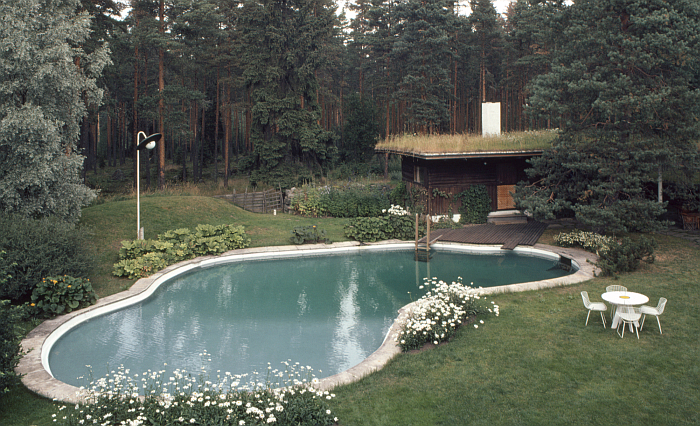
Born in Palazzolo dello Stella (Udine) on December 4th 1927, Gaetana "Gae" Aulenti is, inarguably, and inexplicably, one of the more popularly underrated 20th century designers; a creative known for a few projects but whose wider oeuvre, and regular, free, movement between creative positions, and equally regular, free, movement between architecture, furniture design, stage design, interior design, et al is not only informative and instructive in context of the development of architecture and design in the course of the second half of the 20th century, but also produced numerous works and projects that could, should, contribute to contemporary design discourses. But which only rarely, if ever, do.
Claiming to be the "first bona fide retrospective" of Gae Aulenti, a claim we see no grounds to doubt, such retrospectives are very rare, Gae Aulenti promises.... we're not entirely sure. As ever the Triennale Design Museum preferring to keep details of their forthcoming exhibitions secret, presumably from a fear that people may visit; however, that said, loudly complained, the mention of a series of 1:1 scale rooms in a presentation format featuring original drawings, photographs, models, et al from Aulenti's archive, and previous experience of the ways and spaces of the Triennale Design Museum, leads us to imagine a presentation that will do more than simply provide for a quick introduction to Gae Aulenti, her work and relevance.
Gae Aulenti is scheduled to open at Triennale Design Museum, Triennale Milano, Viale Alemagna, 6 20121 Milan on Wednesday May 22nd and run until Sunday January 12th. Further details can be found at https://triennale.org
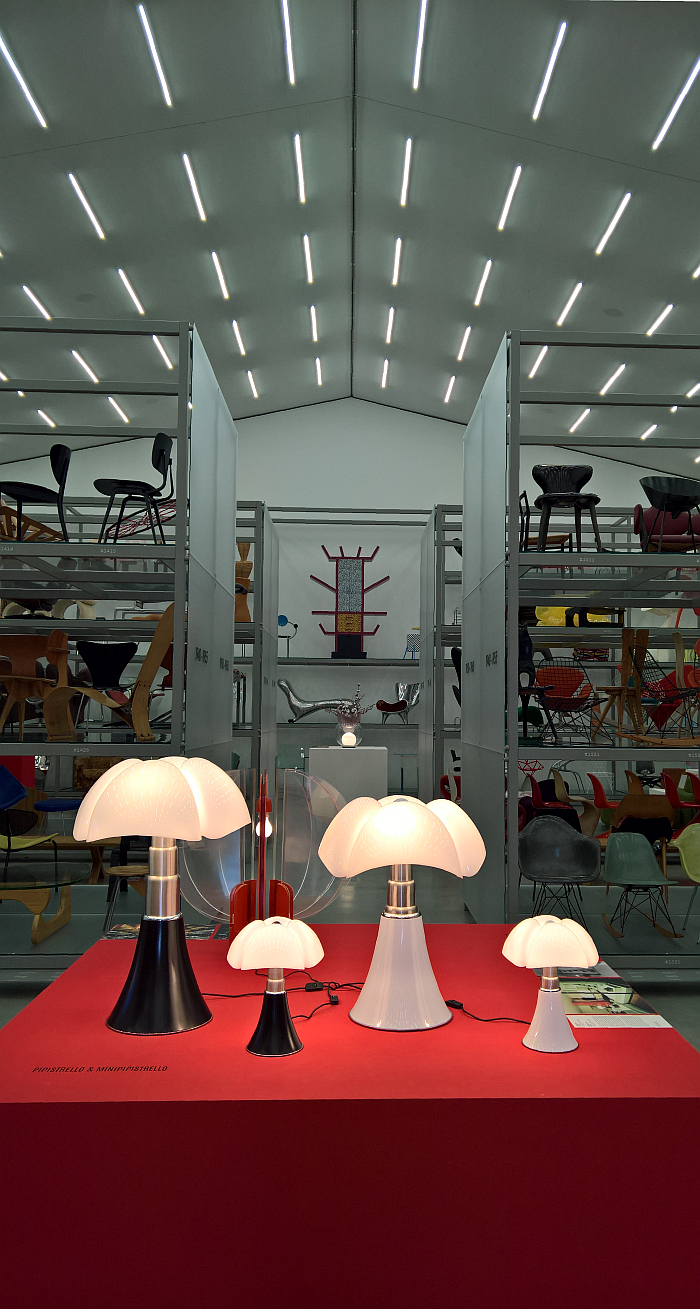
In recent years the Design Museum Brussels have taken the six-monthly revolving Presidency of the Council of the European Union as an impetus to present design from the Presidency nation. A very simple, very satisfying strategy. Certainly in context of a continent where design is popularly believed to come exclusively from Scandinavia or Italy. Or the 1920s. On July 1st 2024 Hungary take on the Presidency and in May 2024 Design Museum Brussels open Innovating across Borders a showcase devoted to the Hungarian designer Sándor Borz Kováts, a designer who died in 1973 at the tragically young age of just 33, and thus not only before he could fully develop his potential, but in an age before the materials and processes and positions he, arguably, required were sufficiently developed to allow him to understand his potential. And to understand how to realise that potential. Potential which from today's perspective is all too easy to appreciate. And to lament that it was never realised.
Promising a presentation that sets works by Sándor Borz Kováts alongside works by contemporaneous western European designers that should help set Borz Kováts's works in context of the 1960s and (early) 1970s Europe in which he worked, and also alongside contemporary designs by Moholy-Nagy University of Art and Design students/recent graduates that should help set Borz Kováts's work in contemporary contexts, Innovating across Borders should not only allow for an introduction to the work and positions of a very interesting and informative designer, a largely anonymous designer worthy of a wider audience, but also help expand the narrative of the (hi)story of design in Europe and thereby allow for fresh perspectives on contemporary European design.
Innovating across Borders. Reflections on the Oeuvre of Sándor Borz Kováts is scheduled to open at Design Museum Brussels, Place de la Belgique 1, 1020 Brussels on Wednesday May 8th and run until Sunday September 22nd. Further details can be found at https://designmuseum.brussels
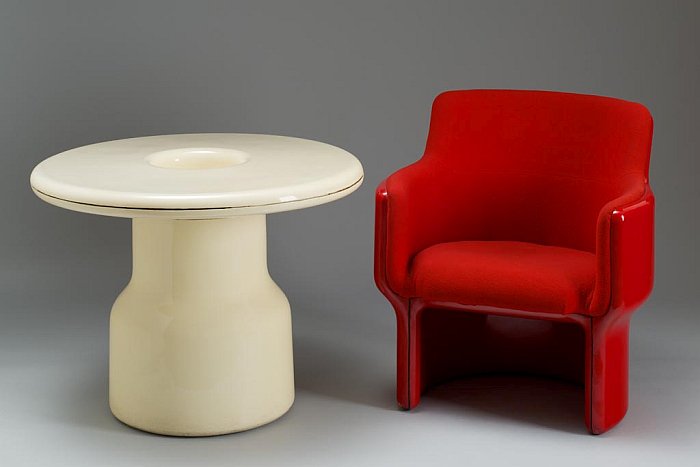
As oft noted in these dispatches, perhaps most directly in context of the Stadtmuseum Weimar's exhibition Mathilde von Freytag-Loringhoven. Painter, Author, Animal Psychologist and Bauhaus Critic, and also from Power Space Violence. Planning and Building under National Socialism at the Akademie der Künste, Berlin, for all that the Bauhauses are often understood as victims of the NSDAP, things were never that black and white: the Bauhaus community was as politically divided as the wider community of the period, and a great many Bauhäusler not only supported the NSDAP but actively worked with them. And often actively worked for their heinous aims.
Or put another way, for all that Bauhaus was blue and red and yellow, it was also brown.
A reality it is important is popularly better understood, is important that the (hi)story of Bauhaus and the Bauhäusler is popularly better understood than it currently is; and that not least in context of elucidating the role and function of architecture and design as political tools, the use of culture for political aims.
Understandings and appreciations Klassik Stiftung Weimar should help mediate in context of Bauhaus and National Socialism, an inter-connected, inter-layered, trio of exhibitions at three Weimar institutions: Removed – Confiscated – Assimilated, 1930/1937 at the Bauhaus Museum with its focus on the NSDAP's crusade against entartete Kunst, Degenerate Art, that cultural war which affected a great many Bauhäusler; Living in the Dictatorship, 1933-1945 at the Schiller-Museum which will elucidate the varied biographies of various Bauhäusler following the NSDAP's seizure of power, be that a biography of resistance, flight, acceptance, passivity, support or deportation and murder; and The Bauhaus as a Site of Political Contest, 1919-1933 at the Museum Neues Weimar which will seek to explore the complexities of the institutions', and their staff and students', relationships with the contemporary political situation in which they lived and worked in Weimar, Dessau and Berlin.
In addition the Bauhaus Museum will host the installation Denkmal über Ehrlichkeit, Monument to Honesty, by Friedrich von Borries, Frieder Bohaumilitzky and Jens-Uwe Fischer which with its focus on Franz Ehrlich — ehrlich = honesty, and also candid, bona-fide, sincere — a Bauhäusler who was just as happy to serve the post-War SED dictatorship in East Germany as he was to serve the warmongering NSDAP dictatorship, should help underscore the similarities of totalitarian regimes of all hues. While also questioning contemporary Ehrlichkeit.
And thus a landscape of exhibitions which should not only allow for that necessary re-approaching of the narrative of the Bauhaus, it's freeing from so many of the lazy simplifications that have become hard facts over recent decades, but also allow for wider, differentiated perspectives on the rise of the NSDAP, a not irrelevant theme 100 years later.
Bauhaus and National Socialism is scheduled to open at the Museum Neues Weimar, Schiller-Museum and Bauhaus Museum, Weimar, on Thursday May 9th and run until Sunday September 15th. Further details can be found at www.klassik-stiftung.de
